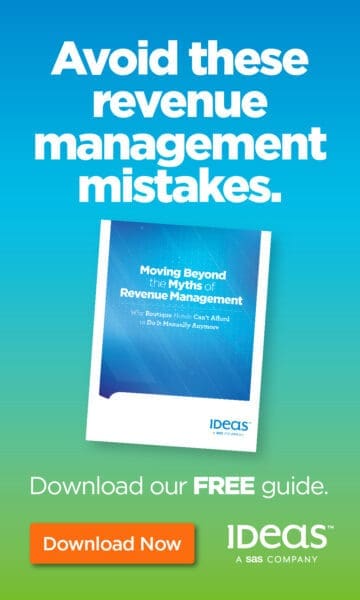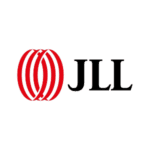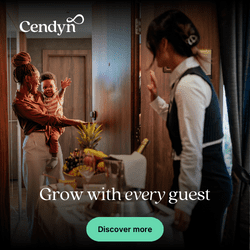 The normalization of travel from the recovery period will likely mean a plateauing of both rates and occupancy numbers for 2023. This is one of the key reasons why the two of us are big proponents of hotels have an eye towards TRevPAR (total revenue per available room) by looking to pad rooms revenues with ancillary spend. To matter the scope of this vision, though, in a labor-tight world it’s the underlying systems and databases that will enable this revenue-per-guest growth.
The normalization of travel from the recovery period will likely mean a plateauing of both rates and occupancy numbers for 2023. This is one of the key reasons why the two of us are big proponents of hotels have an eye towards TRevPAR (total revenue per available room) by looking to pad rooms revenues with ancillary spend. To matter the scope of this vision, though, in a labor-tight world it’s the underlying systems and databases that will enable this revenue-per-guest growth.
The key objective should thus be the development of a single source of truth for all guest data. Once you have these unified guest profiles, you can then make very smart observations about your customers in terms of who spends more while on premises versus only treating your hotel as a ‘heads in beds’ property. In the short run, this will inform channel distribution, promotions and packages, while longer term this will help with marketing campaign design, branding and serious capex.
Concurrently, what we have seen when advising hotels on improving their tech stacks is that their total system deployment is often too complex. Thinking in terms of one-off solutions to fit a single department’s needs is no longer a viable process as this creates more interfaces that need to be maintained and the possibility of what we call zombie platforms – those systems that your teams are too busy to learn. The end result throughout is more costs, either directly through higher SaaS fees to all vendors or through inefficient usage.
So, minimizing the technological complexity of a hotel can be a win-win by reducing costs and ramping up analytics to boost ancillary spend. The question then is who can help you do this best by assuming the role of a one-stop shop for both the various spoke of hotel operations software and the central hub for guest data that are necessary for growing TRevPAR.
To illustrate how this can be done and to highlight some specific use cases that will give you a sense of where the technology is going, we sat down with the product team at INTELITY whose core ticketing platform and GEMS (Guest Experience Management System) together have the ability to quickly take on this single-source-of-truth role, as well as help fill some gaps in operational management that would have otherwise required the extra cost of single-use system deployments.
What can you do with a single source of truth?
A good GEMS lets a hotel copy, clean and merge guest data from the PMS, POS, any other F&B systems, spa booking software, operations platform and the hotel guest app. Once you have that, the possibilities are only as good as the ideas, questions and inferences your managers have.
To use one previous consulting assignment here in Canada as an example, we set out to turn a rural, leisure resort on Vancouver Island into a culinary destination, starting with the development of a world-class wine program to grow F&B revenues per guest.
By building a single source of truth for guest data, we were able to:
- Cross-reference restaurant wine purchases with overnight stay behavior to set up packages with the right wine components added into a price point and LOS with proven conversion
- Know when table reservations and other purchases were made to then adjust awareness activities around the pre-booking, prearrival and on-premises stages of the guest journey
- Target past hotel guests whose purchase history suggested that they were wine enthusiasts with specific promotions and first access to upcoming wine-themed events
- Know which inventory was moving amongst both hotel guests and day visitors in order to fine tune the beverage strategy and alcoholic welcome amenity offerings
- Track overlap with other ancillary spend – spa and activities – to see if other opportunities existed to cross-sell
And that’s just with wine purchases as the objective – lots of other possibilities once you have the data in all in one place. And these points above may seem simple, but before this transition, the creation and targeting for something like this would all have to be done using offline exported sheets in Excel.
How unified platforms help save labor
Growing TRevPAR is great, but it can’t be done without addressing the elephant in the guestroom – staffing. Namely, most of us can’t think about adding services when our current ones are lacking or suffering from cost overruns. Here’s what we found in INTELITY — both from its back-of-house platform and from its guest-facing app — so that you can use this as a guide for your own endeavors:
1. The hotel app that teams like to use.
From the point of view of the onsite content managers, it’s all about having the ability to automate service requests as well as execute no-code updates on the fly within the CMS. Further, having the app directly connected into the GEMS with data ported from the operations platform allowed both the front office manager and executive housekeeper to anticipate high-volume periods for less overtime and faster service overall.
2. The hotel app that guests prefer to use.
By far the most popular use for the app was for F&B, and yet much of this was a straight displacement of orders previously put through the phone system. While on paper it could be seen as a net-zero, this passthrough nevertheless meant that the front desk team wasn’t constantly interrupted by all these in-house guest calls, whether it was for F&B or other complimentary services. Secondly, we found that cart size was larger for app orders than for phone orders, suggesting that guests will spend more with a hotel when they can browse online without feeling rushed by having a live person on the other end.
3. Reframing the mobile check-in experience.
If you look at many of the current online registration and mobile check-in procedures, it can be quite a cumbersome flow from the guest’s perspective. Instead, identification verification can now be completed within the app well in advance of a guest’s stay, then geolocation proximity algorithms can detect on the day of arrival that the guest is now onsite (or is approaching the hotel) and automatically drop the mobile key into the hotel app, as well as ping the appropriate teams for any welcome amenity requirements. This requires a complex series of connections between the app, security platform, operations platform, door locks and the PMS, but it can now be done, all to improve the guest check-in experience and boost labor efficiencies.
4. Pitching in for tech stack gaps.
Opting for a handful of robust platforms oftentimes means that certain departments doggedly request standalone solutions to meet all of their specific needs. Part of our job was thus to deftly handle the change management insofar as convincing siloed teams of the merits of system consolidation with all the productivity gains that would be achieved — for instance, by temporarily filling the role of a service and work order system. What we’ve often found on tech consultations is that the search for a single-use system that can meet the department’s every single requirement can take upwards of a full year, all the while the team suffers in lost productivity. The cost of capital is now too great for this type of waiting game, and it’s better to have a versatile, centralized platform that pitches in wherever needed.
This article may not be reproduced without the expressed permission of the author.

































